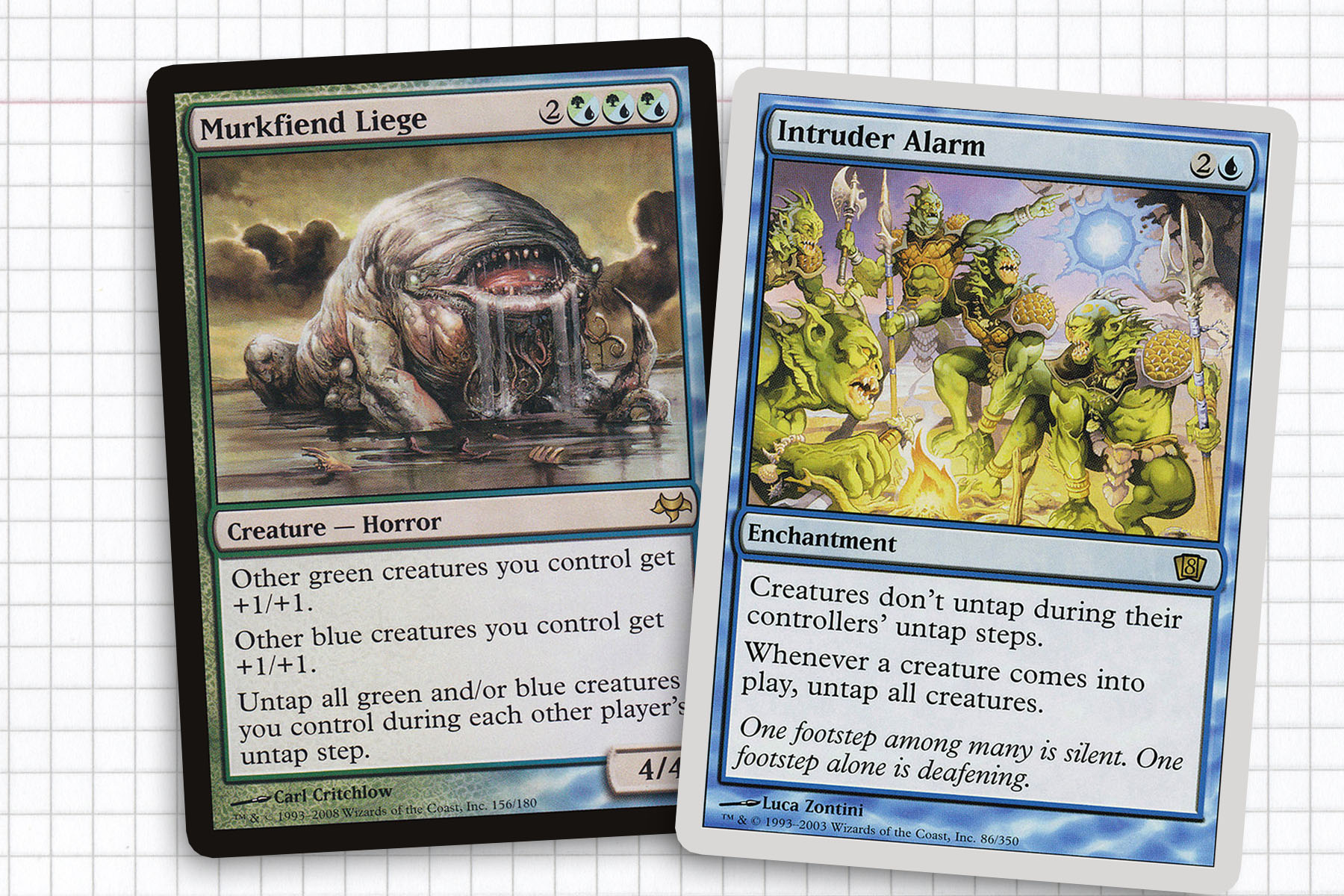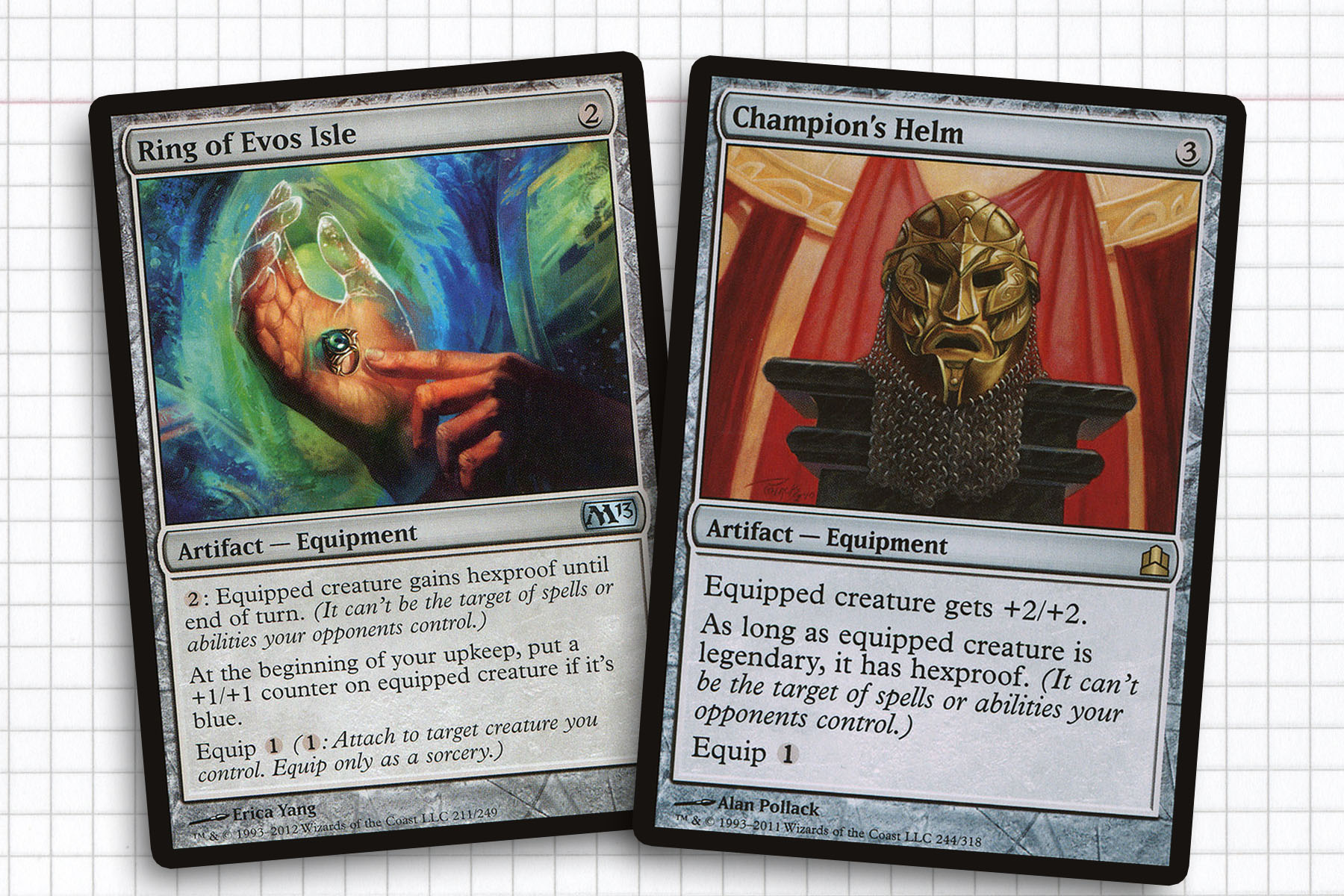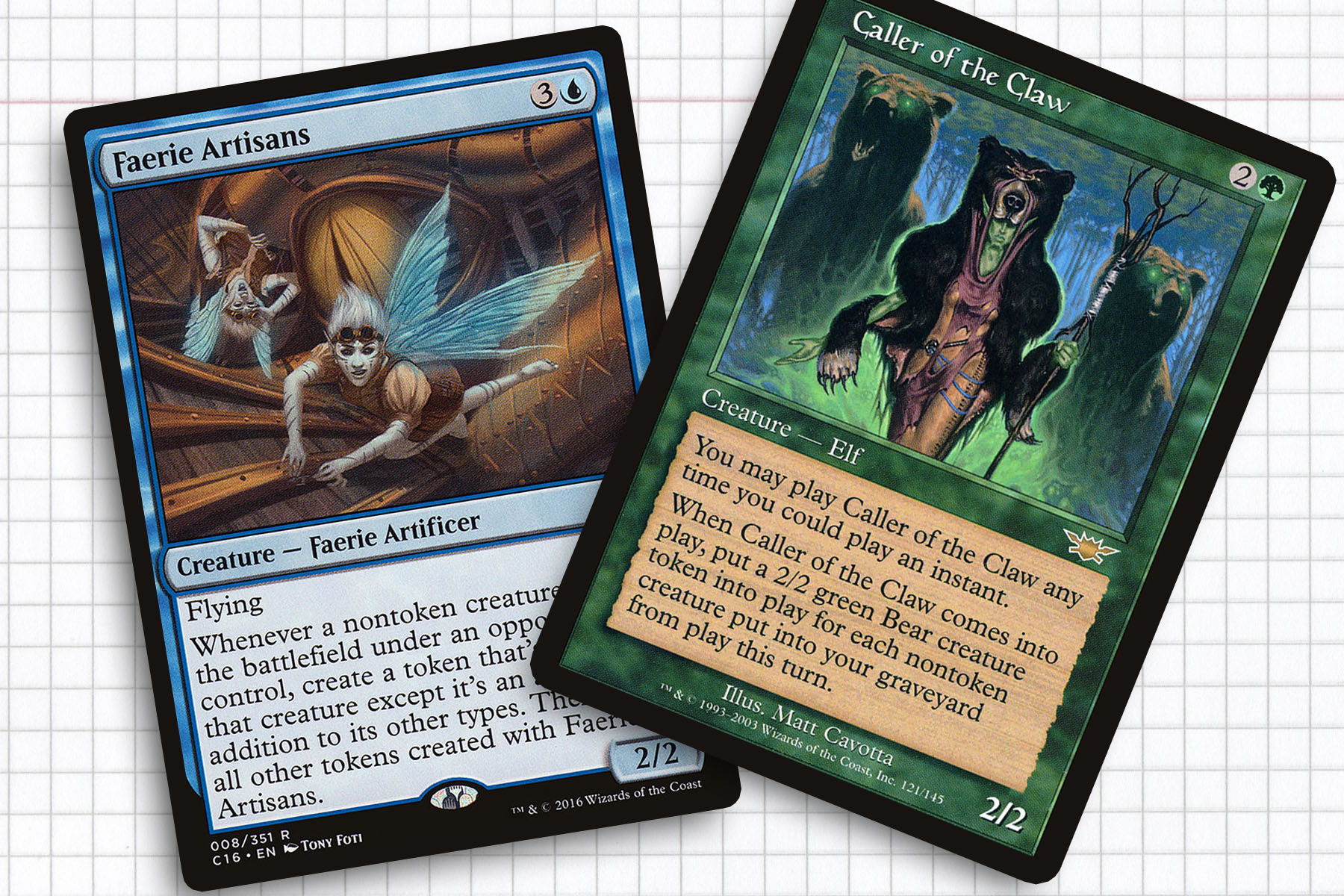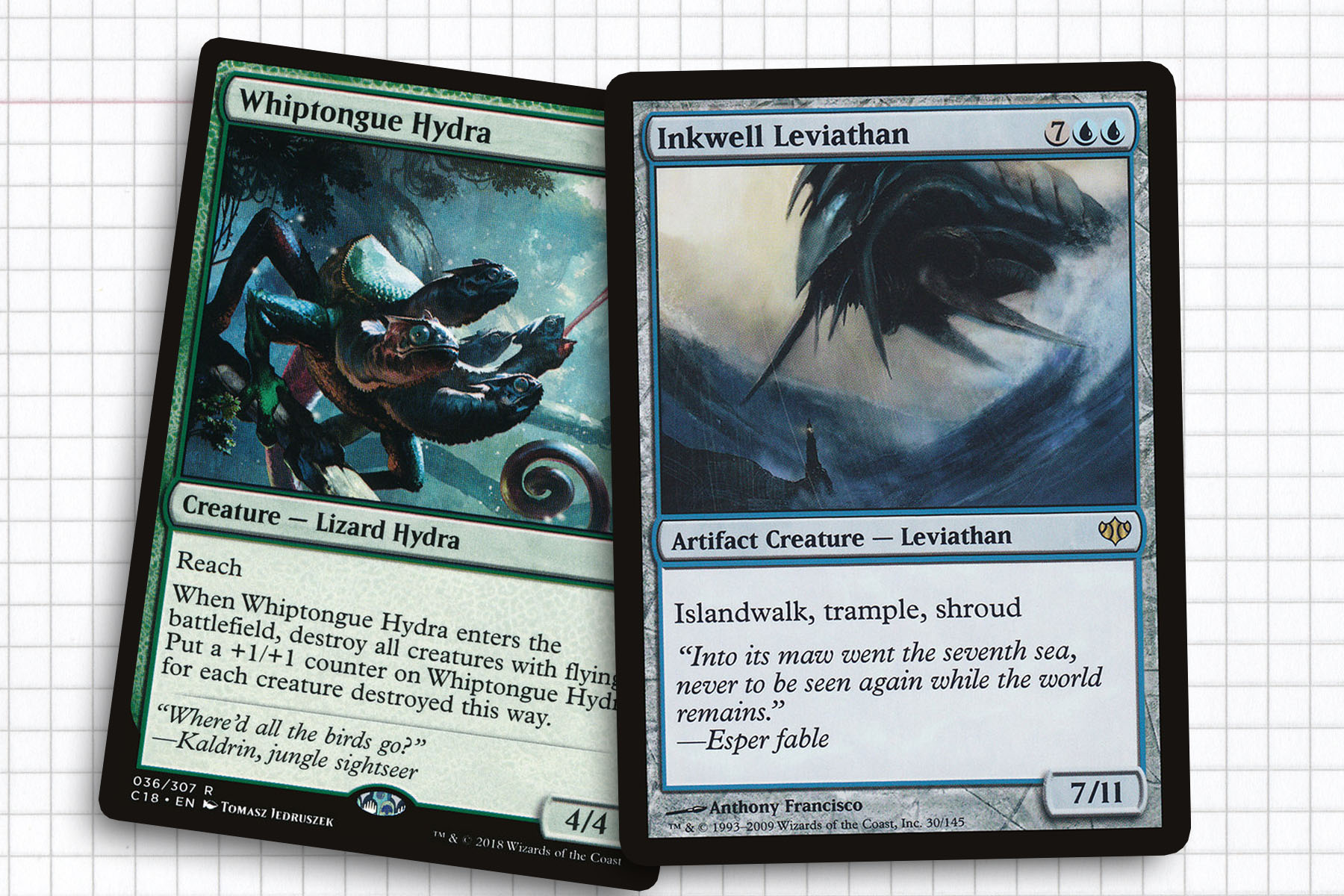I’m not sure what is in the water in Seattle that has been pushing Wizards to make such over the top awesome Simic cards over the last year. Kumena, Tyrant of Orazca, Tatyova, Benthic Druid, and now Prime Speaker Vannifar all have inspired me to find interesting ways to include them in decks, either at the helm or in the other 99. Before last year, I think I would have had a hard time naming a Simic general that really spoke to me. I like both the colors and would often attach them to a third color to make a three-colored deck like The Mimeoplasm or Yasova Dragonclaw for enjoyable results; but lately it’s hard to keep track of each copy of Coiling Oracle and Breeding Pool floating around my office, because I just want to build blue-green decks.
From the moment The Commander Zone previewed Prime Speaker Vannifar, my mind has been racing with all the possibilities the legendary creature offers. Vannifar is a step up from Yisan, the Wanderer Bard, and the pedigree of Birthing Pod is obvious. Perhaps Vannifar is even better, for two reasons easily-overlooked when scanning the spoiler: the lack of mana cost to use her ability, and the creature type Elf. I am admittedly not always in favor of build-around generals, but this is quite a package to build around.
With the ability to search out anything from answers to other player’s threats, utility creatures, or our own threats; this deck will require some forethought to pilot, but should be adaptable to what the deckbuilder wants to get out of it. The sky’s the limit this week, and I’m excited to face the possibilities.

An Embarrassment of Riches
The biggest thing standing in my way of constructing a viable deck around Vannifar is the overabundance of choices. We no doubt want to consistently untap our general and move up the chain, just as Jimmy and Josh discuss during their preview piece. But where do we draw the line? It’s time to once again look to the philosophy of Neale Talbot’s 9×7 theory, in which we strive to find nine groups of seven cards to best shape our deck. Finding suites of cards to best categorize what we want to do will rein in the infinite possibilities.
Untapping: Pestermite, Deceiver Exarch, Bounding Krasis, Breaching Hippocamp, Murkfiend Liege, Aura of Dominion, Freed from the Real, Kiora’s Follower, Pemmin’s Aura, Intruder Alarm
To best maximize our untapping, I’ve strayed slightly away from Neale’s philosophy by making this suite ten cards deep. Because we can easily tutor up any creature we want, creature chains like Pestermite into Breaching Hippocamp will allowing us to move from a two-drop creature to a five-drop creature all in one turn. For long term use, I included Freed from the Real and Pemmin’s Aura to untap Vannifar on a regular basis. And of course there is Intruder Alarm for non-stop untapping.

The First Line of Defense
Besides including Birthing Pod in our deck, we really have nothing else like our general add redundancy. As such, keeping our general safe is going to be one of the most important goals of our deck. Our options are limited because we still need to be able to target Vannifar, so we need hexproof-granting effects.
Untouchable: Alpha Authority, Champion’s Helm, Curator’s Ward, Mask of Avacyn, Ring of Evos Isle, Swiftfoot Boots
Some of these are more inconvenient than others; but since we likely won’t have the ability to tutor for non creatures, we need to include every viable option. The most important part is that we make Vannifar hard to interact with to protect our engine from disruption.

Not Entirely Our Creatures
Once we have the ability to untap our general with relative ease, it becomes important that we have a plan for what we’re going to be sacrificing to tutor creatures out of our deck. Obviously we’ll sacrifice some of our own creatures, but in many ways it seems much more advantageous to use other players’ creatures for this purpose.
Yours, But Kinda Mine: Chamber of Manipulation, Empress Galina, Faerie Artisans, Keiga, the Tide Star, Overtaker, Ray of Command, Sower of Temptation
In the spirit of Yasova Dragonclaw, sometimes having control of your opponent’s creatures can be really fun. And for this deck, some of the momentary or conditional creature stealing effects are all we’ll need. This turns our general into not just a Birthing Pod, but removal for any threats we might not be equipped to handle and can’t use to our own means.
A Wealth of Tokens: Avenger of Zendikar, Bramble Sovereign, Brood Monitor, Caller of the Claw, Vile Redeemer, Wurmcoil Engine
Whereas the previous suite was looking to open our sacrifice options up by stealing creatures, this one is meant to help us start again from brand new. Caller of the Claw and Vile Redeemer are especially well-suited for this deck, because they can be cast at the end of an especially activation-heavy turn to fill our board with tokens. Paired with Parallel Lives or Doubling Season, all of these cards supply us with ample creatures with zero converted mana cost for sacrificing or simply keeping us alive as blockers.
Copy Machines: Stunt Double, Rite of Replication, Phantasmal Image, Quicksilver Gargantuan, Phyrexian Metamorph
While not a full suite of seven cards, it’s also a smart move to include a few Clone-effects, especially those that can be tutored up along our mana curve. In the later parts of the game, the ability to turn an Elvish Mystic into Phantasmal Image copying one of our opponents’ finishers can be a great desperation play to keep us relevant.

What We’re Building Toward
Finally, we need to nail down what we’re looking to include in our deck as targets for the main theme. I’ve broken my biggest picks into two categories, utility and threats, meaning that attentive readers will notice that I am not answering all nine suites prescribed by Neale Talbot. While vital to a Commander deck, I believe the counter magic, ramp, and other miscellaneous components should be up to the deckbuilder themselves to decide how they will tackle those elements.
The Toolbox: Acidic Slime, Bane of Progress, Mulldrifter, Prime Speaker Zegana, Scourge of Fleets, Soul of the Harvest, Whiptongue Hydra
While there are likely dozens of acceptable choices for utility creatures, I believe these seven serve the purpose of supplying us with ample card draw and removal attached to bodies. There is not a particular converted mana cost we are looking to hit, but five and six offer us some of the best options. Fortunately, that is the range we can ramp into quickly with our untap chain described above. This clears the way for the higher converted mana cost creatures that should serve as our primary threats in most situations.
The Threats: Carnage Tyrant, Inkwell Leviathan, Imperiosaur, Polyraptor, Simic Sky Swallower, Stormtide Leviathan, World Breaker
This was the hardest suite to nail down, because we have to come up with answers that are generally good in just about any situation. In the case of Imperiosaur, I wanted a good creature that could be tutored lower in our curve. With Polyraptor, I was looking to take advantage of the tokens it makes which retain the converted mana cost for future fodder. The rest represent some of the best bodies we can get at these higher converted mana costs.
What I will admit is missing from this suite are cards with mana costs of ten or higher. Obviously things like Eldrazi would be great in this deck for their bodies alone. But the higher converted mana cost we go up, the smaller amount of targets we should have. I don’t necessarily believe that we are going to find a proper ladder to reach up to those CMCs. In my mind, once you have a good eight drop, why would you sacrifice it for anything else?
Prime Speaker Vannifar was destined to be a notable inclusion into the format. She has the ability of a known powerful archetype built into her, and because of that I believe we should expect to see her a lot in the near future. How would you finish this decklist? And are you excited to play with or against Vannifar? Until next time, thanks.
Ryan Sainio is a Graphic Designer who writes about EDH, the EDH community, and streams on Twitch in his down time. He has been playing Magic: The Gathering since 7th Edition in 2002 and values flavorful and fun gameplay over competitively optimized decks. Join him for a stream at twitch.tv/hipstersainio on Tuesday nights.

